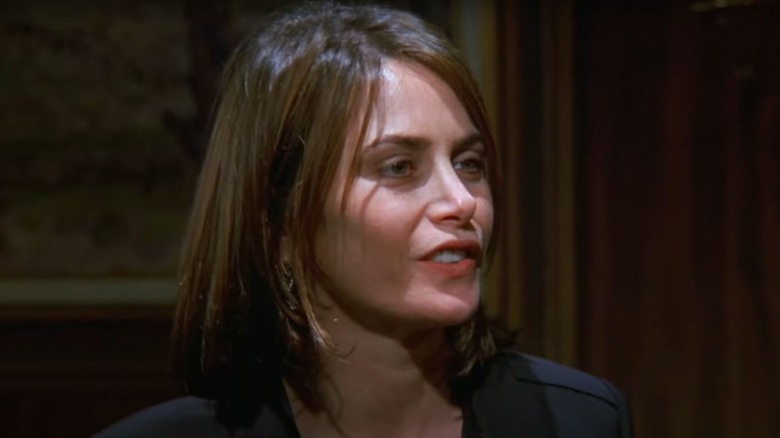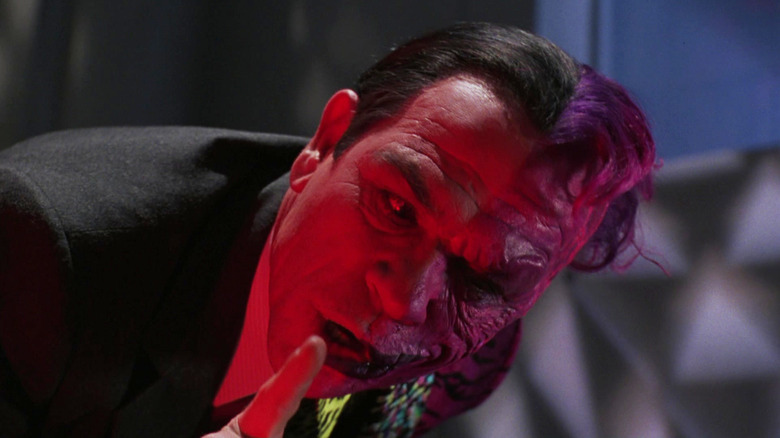
"Seinfeld" might be one of the best sitcoms of all time, but this doesn't mean the show was always at the top of its game. As a seminal 1990s comedy series, it existed in the era's cultural space and drew its humor from the things that could fly back then ... and in some cases, this led to gags that are deeply uncomfortable in hindsight.
A prime example of the show swinging and utterly missing with its jokes is "Seinfeld" season 9, episode 10, "The Strike." The episode has cemented its place in pop
culture history thanks to its focus on the wonderful made-up holiday known as Festivus, but it also features a rather less savory subplot involving Jerry's (Jerry Seinfeld) date, Gwen (Karen Fineman). Throughout the episode, much mirth is made about the way several characters -- including Jerry -- perceive Gwen as being extremely attractive in flattering lighting but far less so in other circumstances, resulting in several misunderstandings and a very predictable relationship disaster. In an inside look of the episode, writer Dan O'Keefe explained that the inspiration for the Gwen storyline was a combination of personal experience and the Batman villain Two-Face, whose face is famously split between a regular side and a terribly damaged one:
"That was based on a real woman I went to college with, who I would occasionally try to approach, and then she'd turn her head and the light would catch along, and she would look like a creature of the deep. She was alternately beautiful and malformed. Looking at it was a real phenomenon. It reminded me of the character Two-Face. Harvey Dent, District Attorney of Gotham."
Read more: 15 Best TV Shows That Were Canceled After Only One Season
The Episode Even Name-Drops Two-Face, But That Doesn't Make The Subplot Any Funnier

Not only did O'Keefe confirm that Two-Face served as a direct inspiration for Gwen, but the characters also discuss this in the episode. George (Jason Alexander) even labels the "syndrome" of the changing look as Gwen being "a Two-Face," followed by Jerry inquiring whether George is alluding to the Batman villain. (George claims he isn't, but he begrudgingly allows the reference.)
The whole subplot and the various characters' reactions to Gwen's perceived unattractiveness in certain lighting serves as yet another reminder that the main characters of "Seinfeld" are awful. Their extremely petty and self-centered nature, after all, is the cornerstone of the entire show. Still, "Seinfeld" has been able to communicate this brilliantly time and time again, but the Gwen storyline fails to do so. Instead, it's flat out misogynistic and isn't even remotely funny.
Taken out of context, individual chapters of "Seinfeld" have been known to make a negative impact -- for instance, Bill Murray despised "Seinfeld" because of a single awful episode. However, the "Two-Face" storyline is arguably even worse, because it sticks out like a sore thumb in an episode that's littered with all-time "Seinfeld" gags like Festivus itself and guest star Kevin McDonald's denim vest guy. Thanks to these better moments, "The Strike" didn't quite make it onto /Film's list of "Seinfeld" episodes that have aged poorly, but the Gwen subplot still serves as a reminder that the show's track record is far from unblemished.
If you're looking for the easiest way to keep up with all the major movie and TV news, why not sign up to our free newsletter?
Read the original article on SlashFilm.










